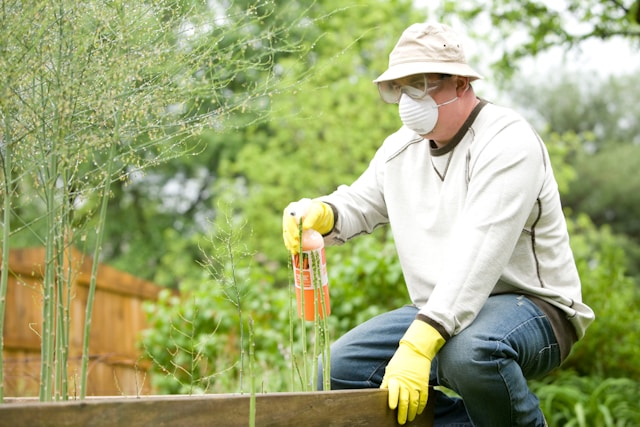Pest control is a timeless endeavor that humans have been engaged in for centuries. From ancient civilizations to modern societies, the fight against pests has been relentless. Whether it’s insects invading our homes, rodents infesting our crops, or parasites spreading diseases, pests pose significant challenges to our health, safety, and well-being. However, with advancements in science, technology, and environmental awareness, we now have a plethora of effective pest control strategies at our disposal.
Integrated Pest Management (IPM)
Integrated Pest Management (IPM) is a holistic approach to pest control that emphasizes prevention, monitoring, and control through a combination of techniques. Unlike traditional pest control methods that rely heavily on chemical pesticides, IPM seeks to minimize pesticide use by integrating multiple strategies such as biological control, habitat modification, and cultural practices. Professionals from ORKIN, for example, renowned for their expertise in pest management, often play a crucial role in implementing IPM strategies. One key aspect of IPM is the use of biological control agents, such as predators, parasites, and pathogens, to manage pest populations naturally. For example, introducing ladybugs to control aphids in gardens or using parasitic wasps to combat caterpillar infestations can effectively reduce pest numbers without harming the environment.
Natural Predators and Parasites
Nature provides us with a wealth of allies in the battle against pests. Predators and parasites play crucial roles in controlling insect populations and maintaining ecological balance. Encouraging populations of beneficial organisms in your environment can help keep pest numbers in check without resorting to chemical interventions.
For instance, birds such as swallows, sparrows, and bluebirds feed on a variety of insects, including mosquitoes, flies, and beetles. Installing birdhouses, bird feeders, and bird baths can attract these feathered allies to your garden or property, where they can help control pest populations naturally.
Mechanical and Physical Control Methods
Mechanical and physical control methods involve using barriers, traps, and other physical means to prevent pests from accessing desired areas or to capture and remove them from the environment. These methods are often non-toxic and can be highly effective in specific situations, especially when combined with other pest control strategies.
One common mechanical control method is the use of exclusion barriers, such as screens, nets, and fences, to keep pests out of buildings, gardens, or agricultural fields. For example, installing mesh screens on windows and doors can prevent mosquitoes, flies, and other flying insects from entering indoor spaces, reducing the need for chemical insecticides.
Cultural Control Practices
Cultural control practices involve manipulating the environment or altering human behavior to discourage pest infestations and promote natural pest suppression. These practices often focus on disrupting pest life cycles, reducing pest habitats, and enhancing plant health to minimize pest damage without the need for chemical interventions.
Crop rotation is a classic example of a cultural control practice used in agriculture to manage pest populations and maintain soil fertility. By rotating crops in a systematic manner, farmers can disrupt the life cycles of pests that rely on specific host plants, reducing their numbers and preventing buildup in the soil.
Chemical Control Methods
While chemical control methods are often considered a last resort due to their potential environmental impacts, they can be an effective tool for managing severe pest infestations when used judiciously and in combination with other control strategies. Chemical pesticides work by disrupting pest physiology, behavior, or reproduction, leading to their elimination or suppression.
However, it’s essential to choose pesticides carefully and apply them according to label instructions to minimize risks to human health, non-target organisms, and the environment. Selective pesticides that target specific pests while sparing beneficial insects and other organisms are preferred over broad-spectrum chemicals that can cause collateral damage to ecosystems.

Environmental Modifications
Environmental modifications involve altering the physical or chemical characteristics of the environment to make it less conducive to pest survival and reproduction. These modifications can target specific aspects of the pest’s biology or behavior, such as their habitat preferences, feeding habits, or reproductive cycles, to reduce their impact on human activities.
One example of environmental modification is the use of light traps to control nocturnal pests like moths, mosquitoes, and beetles. By strategically placing light traps in areas where pest activity is high, such as near crops or outdoor seating areas, growers can attract and capture flying insects, reducing their numbers and minimizing damage to plants or nuisance to humans.
Community Participation and Education
Community participation and education are vital components of successful pest management programs, as they empower individuals and communities to take proactive measures to prevent and control pest infestations. By raising awareness about pest biology, ecology, and control methods, communities can foster a culture of shared responsibility and collaboration in managing pest problems.
Educational initiatives, such as workshops, seminars, and outreach programs, can provide individuals with the knowledge and skills they need to identify common pests, understand their behaviors and life cycles, and implement effective control strategies. Additionally, community-based monitoring and surveillance efforts can help track pest populations and trends, enabling timely interventions to prevent outbreaks and minimize damage.
Conclusion:
In conclusion, the battle against pests requires a multifaceted approach that integrates various control strategies, ranging from biological, mechanical, and cultural methods to chemical interventions and environmental modifications. By adopting an integrated pest management (IPM) approach and leveraging the collective efforts of individuals, communities, and organizations, we can effectively manage pest populations while minimizing environmental impacts and safeguarding human health.

